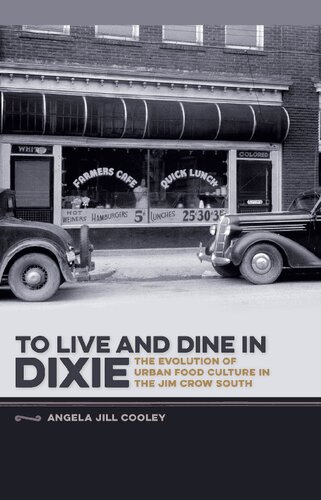

Most ebook files are in PDF format, so you can easily read them using various software such as Foxit Reader or directly on the Google Chrome browser.
Some ebook files are released by publishers in other formats such as .awz, .mobi, .epub, .fb2, etc. You may need to install specific software to read these formats on mobile/PC, such as Calibre.
Please read the tutorial at this link: https://ebookbell.com/faq
We offer FREE conversion to the popular formats you request; however, this may take some time. Therefore, right after payment, please email us, and we will try to provide the service as quickly as possible.
For some exceptional file formats or broken links (if any), please refrain from opening any disputes. Instead, email us first, and we will try to assist within a maximum of 6 hours.
EbookBell Team

4.4
72 reviewsThis book explores the changing food culture of the urban American South during the Jim Crow era by examining how race, ethnicity, class, and gender contributed to the development and maintenance of racial segregation in public eating places. Focusing primarily on the 1900s to the 1960s, Angela Jill Cooley identifies the cultural differences between activists who saw public eating places like urban lunch counters as sites of political participation and believed access to such spaces a right of citizenship, and white supremacists who interpreted desegregation as a challenge to property rights and advocated local control over racial issues.
Significant legal changes occurred across this period as the federal government sided at first with the white supremacists but later supported the unprecedented progress of the Civil Rights Act of 1964, which―among other things―required desegregation of the nation’s restaurants. Because the culture of white supremacy that contributed to racial segregation in public accommodations began in the white southern home, Cooley also explores domestic eating practices in nascent southern cities and reveals how the most private of activities―cooking and dining― became a cause for public concern from the meeting rooms of local women’s clubs to the halls of the U.S. Congress.